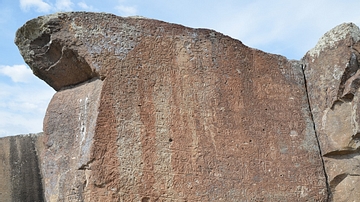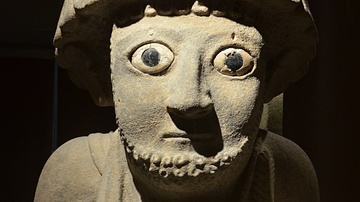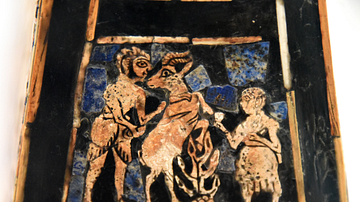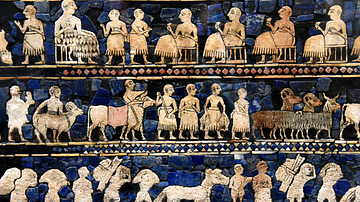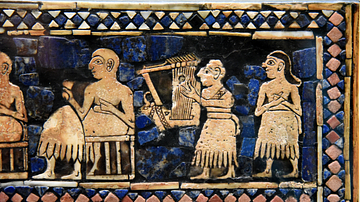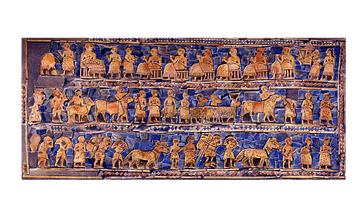Illustration
A close-up of the "Standard Inscription" of the Assyrian king Ashurnasirpal II, from the North-West palace at Nimrud (ancient Kalhu; biblical Calah), northern Mesopotamia, modern-day Iraq, Neo-Assyrian Empire, 865-860 BCE.
The British Museum, London.
The inscription is part of a wall relief that depicts an Apkallu (a protective spirit or sage). The Apkallu's left hand wears a bracelet with a "rosette" and holds a bucket (banduddu in Akkadian). A part of a sword with two lion heads is also seen. This inscription tells us the king's title and achievements and is repeated on almost all wall reliefs at the North-West palace.
About the Author
Cite This Work
APA Style
Amin, O. S. M. (2014, June 26). Standard Inscription of King Ashurnasirpal II. World History Encyclopedia. Retrieved from https://www.worldhistory.org/image/2709/standard-inscription-of-king-ashurnasirpal-ii/
Chicago Style
Amin, Osama Shukir Muhammed. "Standard Inscription of King Ashurnasirpal II." World History Encyclopedia. Last modified June 26, 2014. https://www.worldhistory.org/image/2709/standard-inscription-of-king-ashurnasirpal-ii/.
MLA Style
Amin, Osama Shukir Muhammed. "Standard Inscription of King Ashurnasirpal II." World History Encyclopedia. World History Encyclopedia, 26 Jun 2014. Web. 15 Apr 2025.



